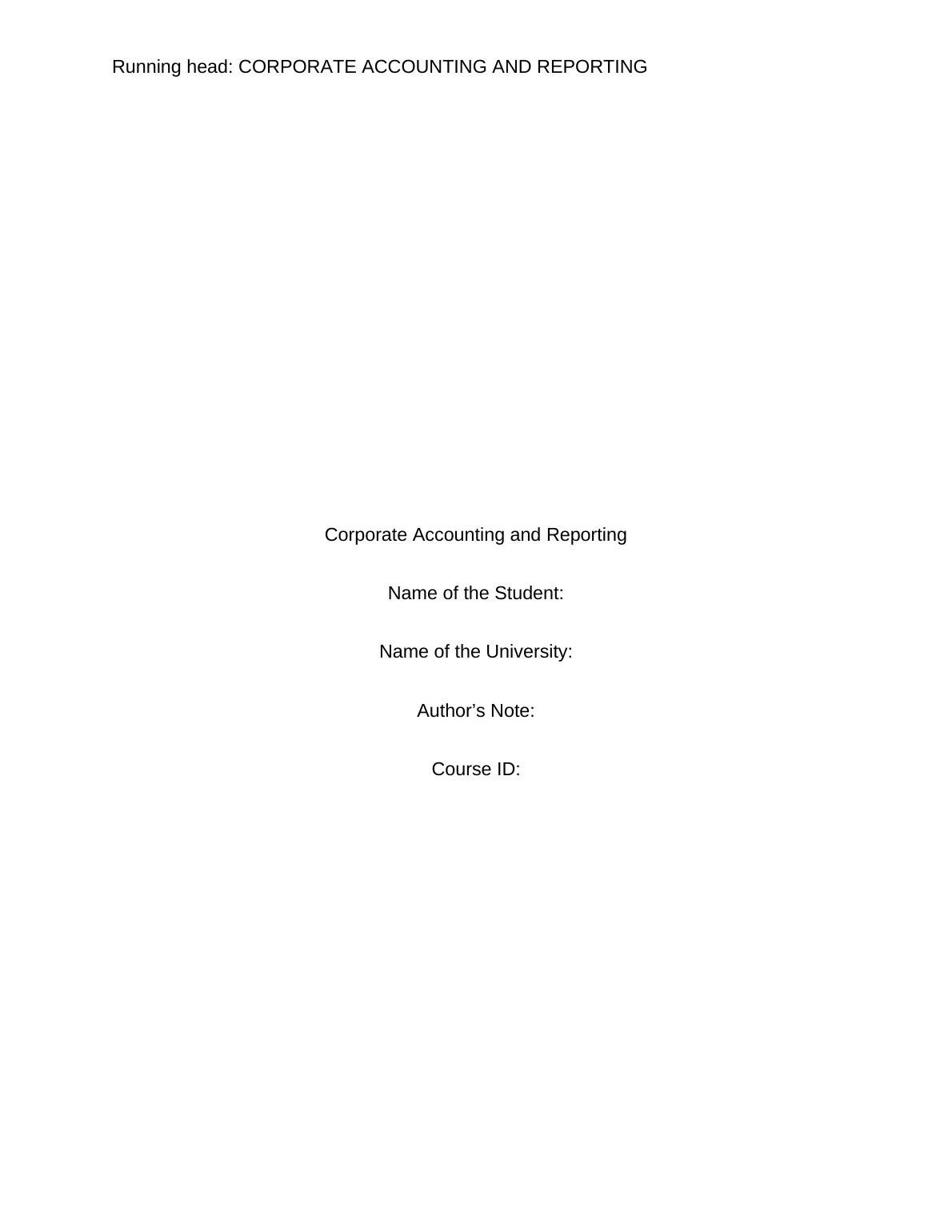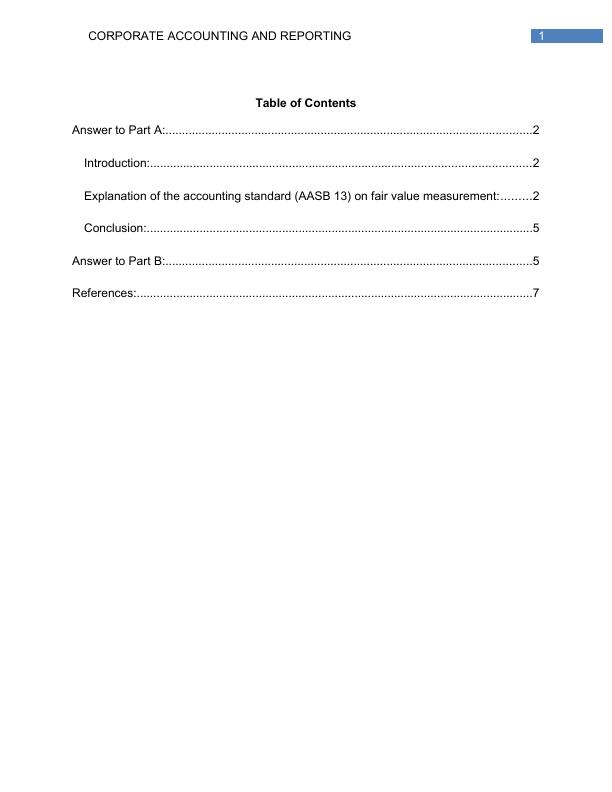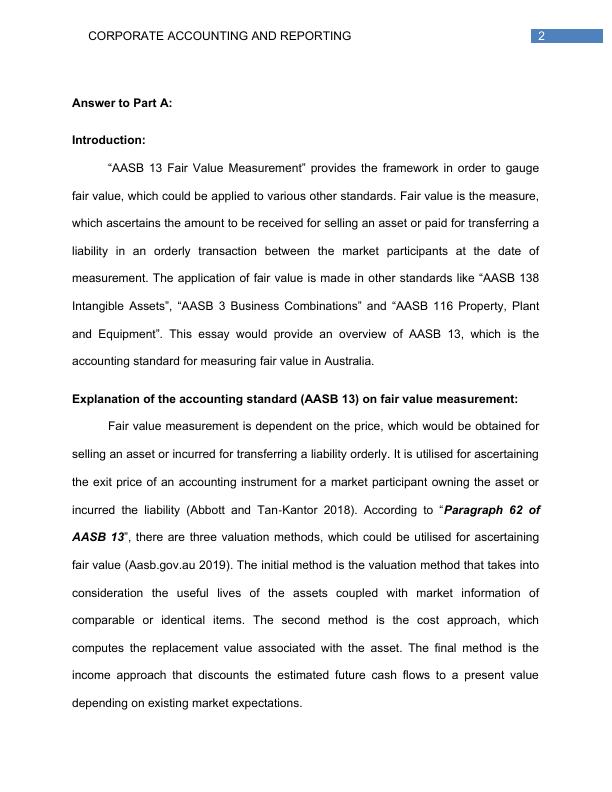CORPORATE ACCOUNTING AND REPORTING THEORY
9 Pages1487 Words22 Views
Added on 2022-05-31
About This Document
AASB 13 Fair Value Measurement” provides the framework in order to gauge fair value, which could be applied to various other standards. Fair value is the measure, which ascertains the amount to be received for selling an asset or paid for transferring a liability in an orderly transaction between the market participants at the date of measurement.
CORPORATE ACCOUNTING AND REPORTING THEORY
Added on 2022-05-31
ShareRelated Documents
End of preview
Want to access all the pages? Upload your documents or become a member.
Corporate Accounting and Reporting - AASB 13 Fair Value Measurement
|9
|1528
|291
Corporate Accounting and Reporting: Fair Value Measurement
|6
|1434
|157
Accounting Issues: Business Combination and Consolidation
|8
|1559
|68
Journal Entries for Business Purchase and Aerodrone Limited
|7
|1454
|214
Accounting Treatment for Assets, Liabilities, and Equity in Business Combination
|7
|1716
|55
Fair Value Measurement in Corporate Finance and Accounting
|7
|1422
|58



